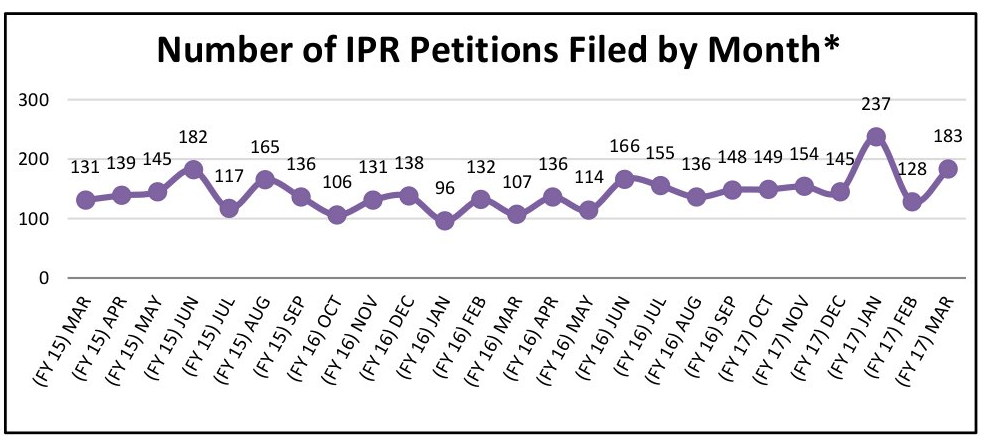
 Source: Patent Trial and Appeal Board Statistics
Source: Patent Trial and Appeal Board Statistics [PDF]
HAVING failed as a company, RPX was recently put on sale and taken over for a symbolic sum of money. Seeing the effect of Section 101 on patent trolls (whose patents were no longer of much use), RPX began exploring the legal terrain in China. The USPTO isn't the world's most lenient patent office anymore; SIPO took this 'crown' of shame.
The recent Court of Appeals for the Federal Circuit’s ruling in Applications in Internet Time v RPX has presented a headache for third party IPR filers everywhere, but arguably none quite as serious as for Unified Patents. Since it was founded in 2012 Unified Patents has made its name as one of the most frequent filers of inter partes reviews, challenging patents of what it claims are of questionable quality that pose a threat to their members in specific zones such as auto, cloud computing and retail.
On August 3, 2018, the Board issued an order terminating IPR2017-02195 pursuant to a joint request filed by Kaldren LLC (an IP Edge entity) and Unified Patents. U.S. Patent 6,820,807, the subject of the IPR petition, relates to formatting digital data into an encoded pattern (such as a QR code).
July included 127 petitions filed, the Federal Circuit making it harder for RPX and Unified Patents to file IPRs, and two noteworthy decisions on public accessibility
July had the second fewest petitions filed at the Patent Trial and Appeal Board (PTAB) this calendar year.
The 127 petitions consisted of 118 inter partes review (IPR), three covered business method (CBM) and five post-grant review (PGR) petitions.
In 2012, Congress enacted the America Invents Act (AIA), which included, among many reforms, the creation of the now-familiar inter partes review (IPR) process. An IPR petitioner may challenge a patent’s claims as wrongly issued based on the availability of certain prior art. If the Patent Trial and Appeal Board (PTAB) decides to institute on a petition, it allows for additional briefing, presentation of limited evidence, and a hearing. Ultimately, the Board issues a final written decision that determines whether the challenged claims are patentable or cancelled. As part of that process, the AIA provides patent owners the right to “file 1 motion to amend the patent” to propose a “reasonable number of substitute claims.” 35 U.S.C. €§ 316(d). The statute also provides that “the petitioner shall have the burden of proving a proposition of unpatentability by a preponderance of the evidence.” €§ 316(e). The en banc question was how those two subsections interact, and more specifically, whether the patent owner or petitioner bears the underlying substantive burden on a motion to amend.